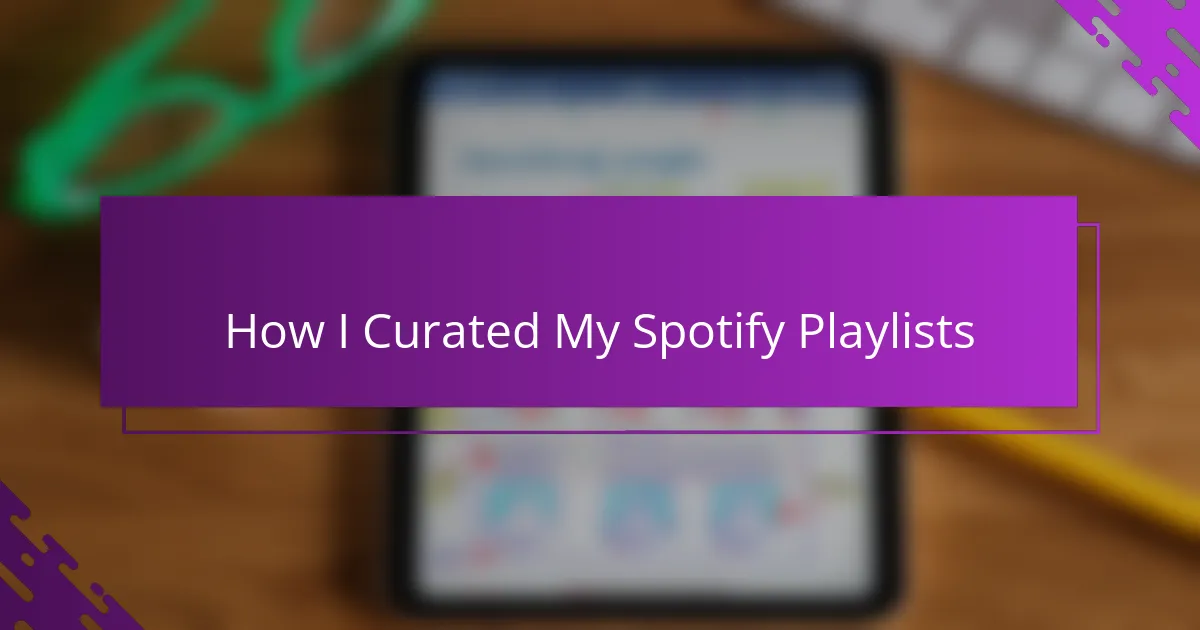Key takeaways
- Spotify playlists serve as personal diaries, capturing emotions and memories through curated music.
- Creating personal playlists enhances mood, provides reflection, and allows for a tailored listening experience.
- Utilizing tools and collaborative features can elevate playlist curation, making music sharing a communal experience.
- Regularly updating and organizing playlists by theme keeps the music relevant and reflective of one’s evolving emotions.
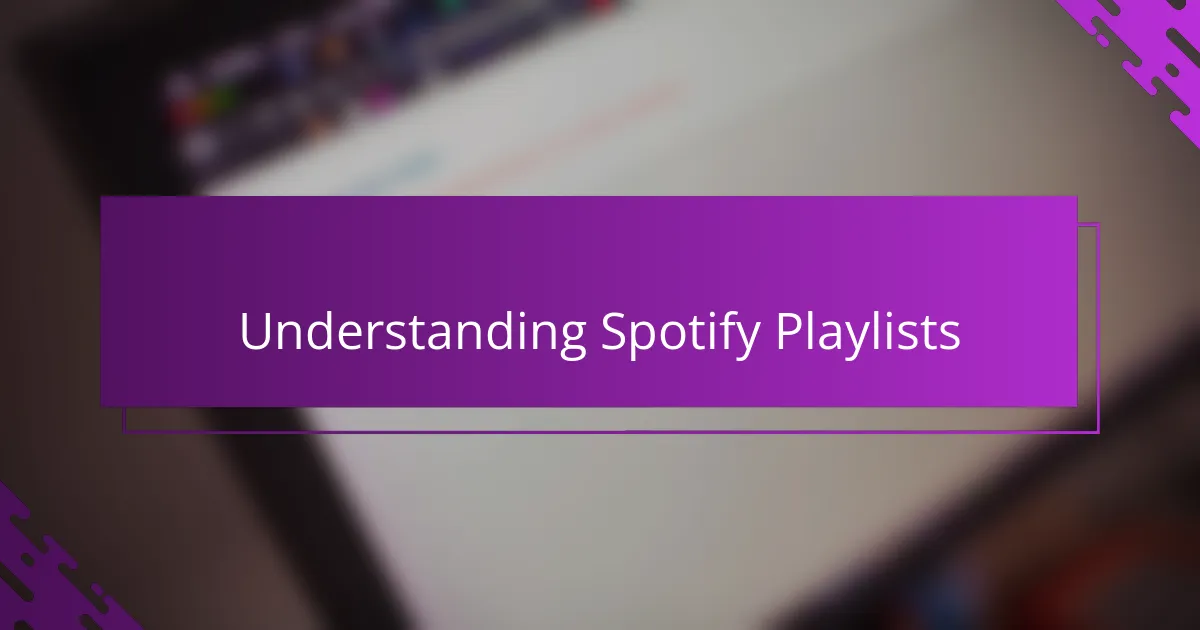
Understanding Spotify Playlists
When I first dove into Spotify playlists, I realized they’re not just random song collections—they’re mood jars, memory capsules, and storytelling tools all rolled into one. Have you ever thought about how a playlist can capture a specific vibe or moment in your life? For me, each playlist became like a personal diary written in music.
Understanding Spotify playlists also means recognizing their flexibility. You can tailor them to fit any mood, occasion, or even a certain group of friends, making the experience deeply personal yet shareable at the same time. It’s fascinating how a few carefully chosen songs can transform a day or bring back a flood of memories.
I often find myself scrolling through my playlists and feeling an emotional connection to each one, as if the sequence of songs was crafted just for my journey. Isn’t it amazing how music can make emotions tangible, and playlists help us organize those feelings in a way only we truly understand?
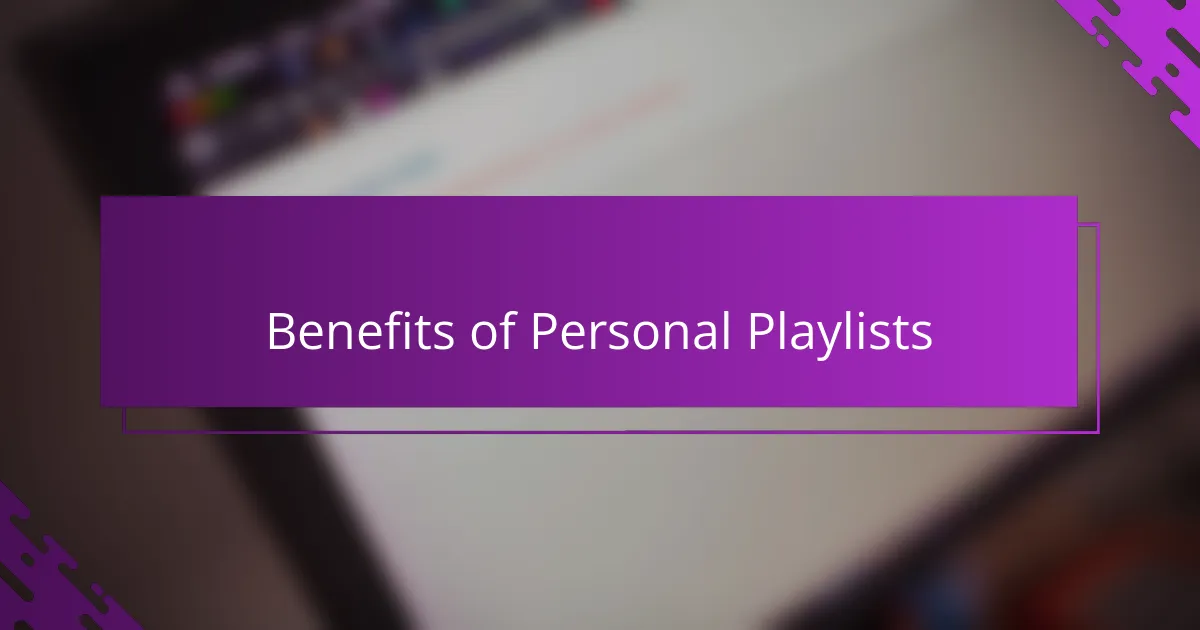
Benefits of Personal Playlists
Creating personal playlists has brought me so much more than just organized music; it’s like having a soundtrack tailored exclusively to my life’s moments. Don’t you find it liberating to have a mix that perfectly matches your mood, whether that’s a burst of energy during a workout or a calm backdrop for reading? For me, these playlists are more than sound—they’re companions through different chapters.
Beyond mood-setting, personal playlists serve as powerful tools for reflection and memory. I often revisit old playlists and feel transported to the exact time and place when I first added those songs. Have you ever noticed how a certain track can instantly unlock a flood of memories? That’s the magic I love—my playlists become a musical photo album filled with emotional snapshots.
There’s also the simple joy of control. Knowing I’ve handpicked every track means I can avoid songs that don’t resonate or disrupt my flow. Isn’t it satisfying to listen without the randomness of shuffle ruining the vibe? Crafting playlists gives me a sense of ownership over my listening experience, making music feel more intentional and meaningful.
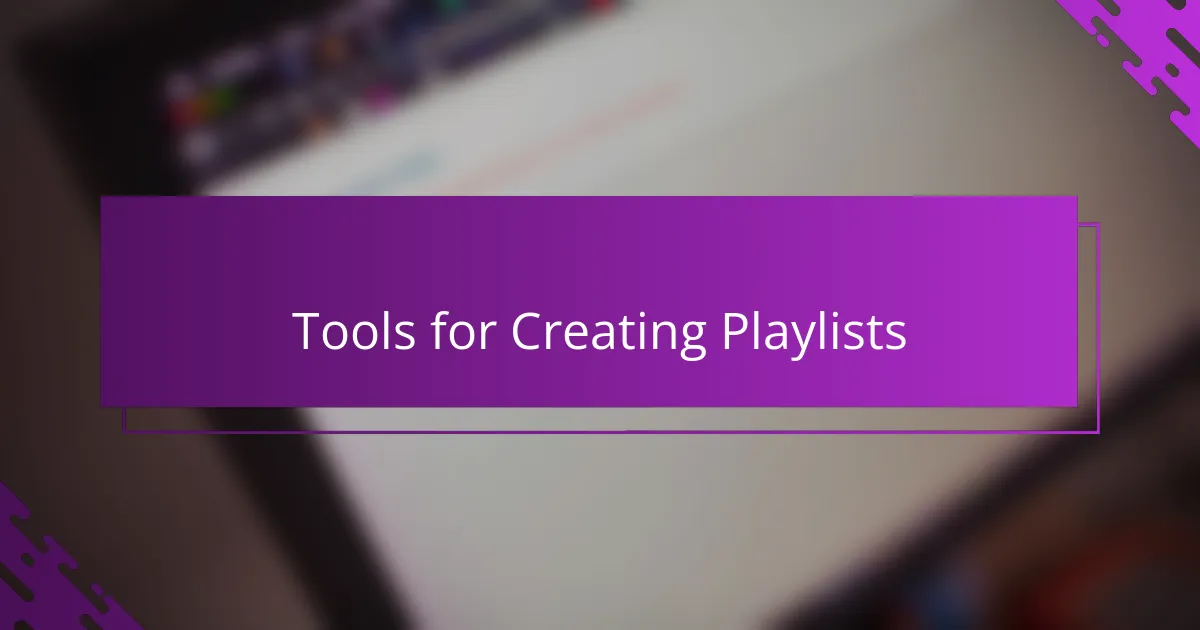
Tools for Creating Playlists
When I first started curating my Spotify playlists, I quickly realized that the right tools can make all the difference. Spotify’s built-in features like the drag-and-drop interface and auto-generated recommendations saved me so much time, especially when I wasn’t sure which songs would flow well together. Have you ever tried those “Enhance” buttons? They surprise me by suggesting tracks that perfectly fit my existing vibe.
But I didn’t stop there. I’ve experimented with third-party apps like Soundiiz and Playlist Machinery, which help me organize and transfer playlists seamlessly. These tools gave me a sense of freedom—I wasn’t stuck within one platform’s limits and could blend my favorite songs from different sources effortlessly. Sometimes, that’s exactly what you need to keep your music collection feeling fresh and uniquely yours.
I also love using collaborative features occasionally. Inviting friends to contribute through Spotify’s collaborative playlists feels like creating a shared soundtrack, bursting with collective memories and inside jokes. Isn’t it special how a simple tool can turn a playlist from solo curation into a vibrant group experience? That interactive element really deepened my connection to music and the people I share it with.
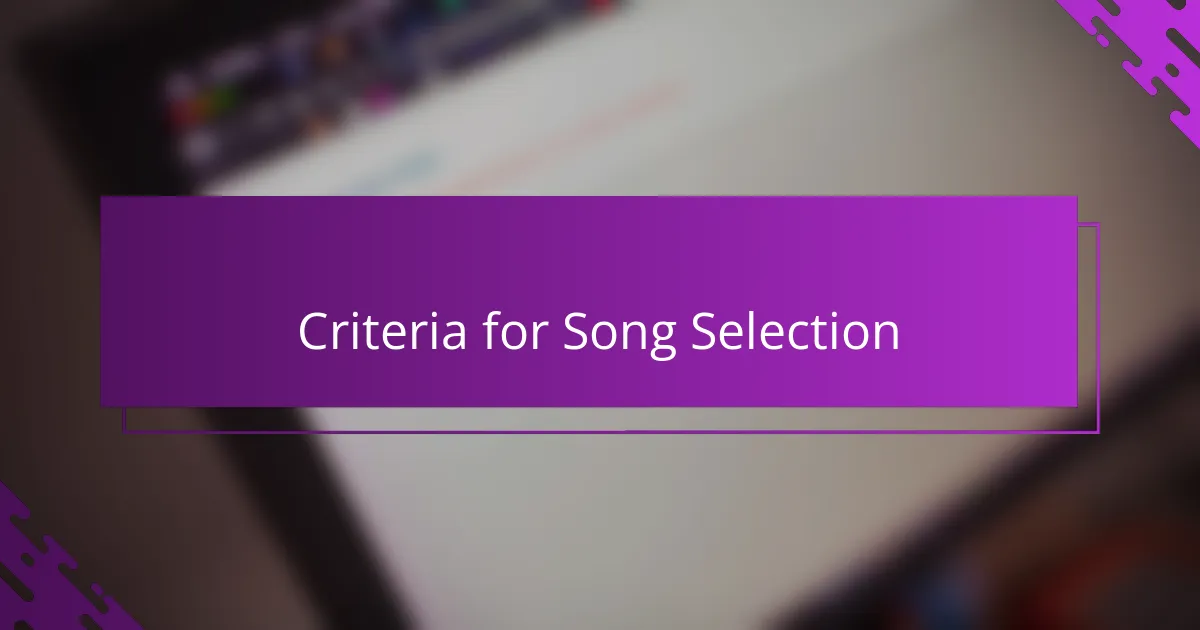
Criteria for Song Selection
For me, the first rule in selecting songs is their emotional resonance. Does the track evoke a feeling or memory that feels true to the playlist’s mood? I often find myself replaying a song several times just to see if it still hits the right emotional note before adding it in.
I also pay close attention to how each song flows into the next. Have you noticed how a sudden change can disrupt your listening experience? I aim for a smooth transition that keeps the energy or sentiment consistent, almost like telling a continuous story with music.
Lastly, I consider the lyrics and messages behind the songs. Sometimes, a particular line or theme speaks directly to where I am in life. Choosing tracks that reflect my thoughts or aspirations makes the playlist feel deeply personal—like having a conversation with myself through music.
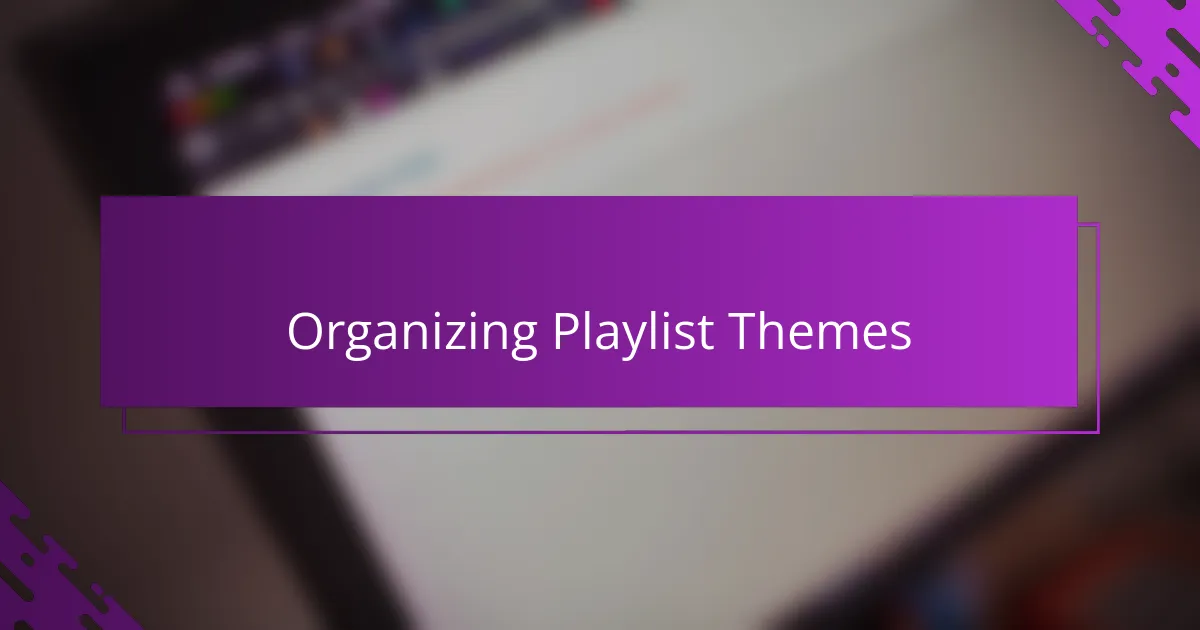
Organizing Playlist Themes
Organizing my playlists by theme has been a game-changer in making each listening session feel intentional. I like to think of themes as the mood or story anchors that give my playlists a unique personality—whether it’s “Sunday morning chill” or “road trip anthems.” Have you ever noticed how a well-defined theme instantly sets the tone before the first song even plays?
Sometimes, it’s tricky to decide where a song fits best, especially when it conveys different emotions. I remember struggling to place one track that felt both nostalgic and upbeat. In the end, I chose the theme that matched the dominant feeling, and it made all the difference. That experience taught me how flexible themes can be, and how they guide not just song selection but the overall vibe.
I often revisit my themes as seasons change or my mood shifts. What felt perfect last winter might not work in summer anymore. It’s a reminder that organizing by theme isn’t static; it evolves with me. Have you tried refreshing your playlists this way? It’s a simple step that keeps your music feeling alive and relevant.
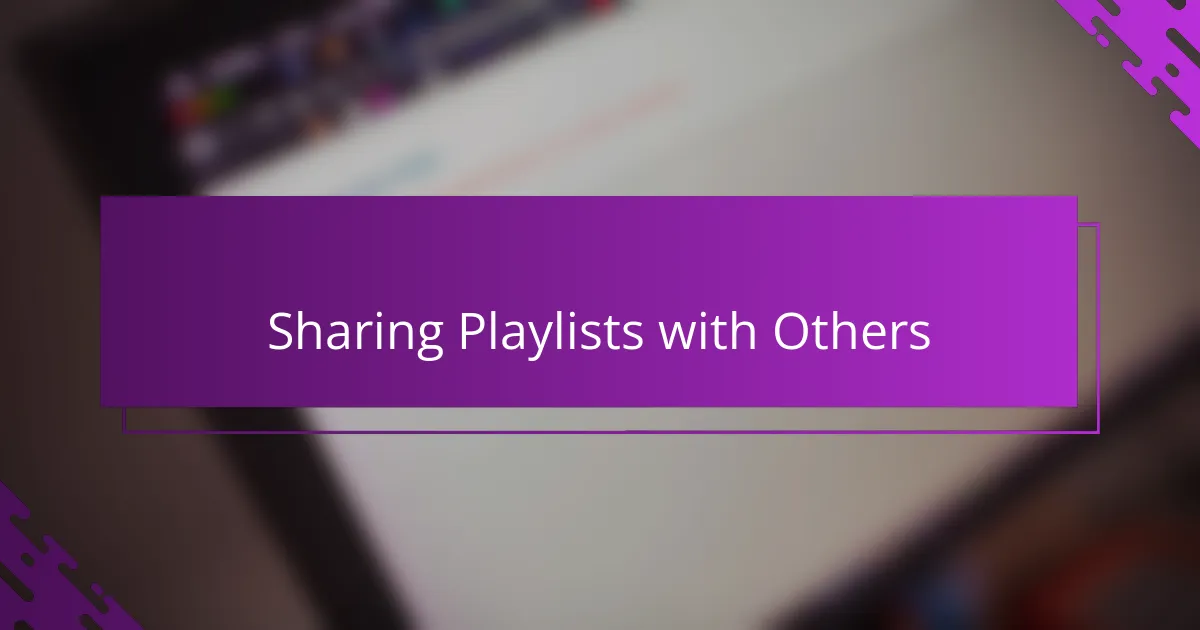
Sharing Playlists with Others
Sharing my playlists with others has always felt like handing over little pieces of my world. I remember sending a carefully curated mix to a friend who was going through a tough time, hoping the songs might offer some comfort. Isn’t it amazing how music can become a language of support without needing a single word?
What I’ve found especially rewarding is how sharing playlists can spark conversations and connections. Sometimes, a friend will discover a song I love and reply with their favorites, turning it into an ongoing exchange. Have you ever experienced that unexpected bond created by exchanging music? For me, those moments highlight how playlists can be more than personal—they’re truly social.
Spotify’s sharing options make this so effortless. Whether it’s a direct link, embedding on social media, or collaborative playlists, there’s something satisfying about seeing others enjoy tracks I’ve handpicked. I wonder if you’ve ever felt proud when someone tells you a playlist you shared became their new favorite? That kind of feedback makes curating feel even more meaningful.
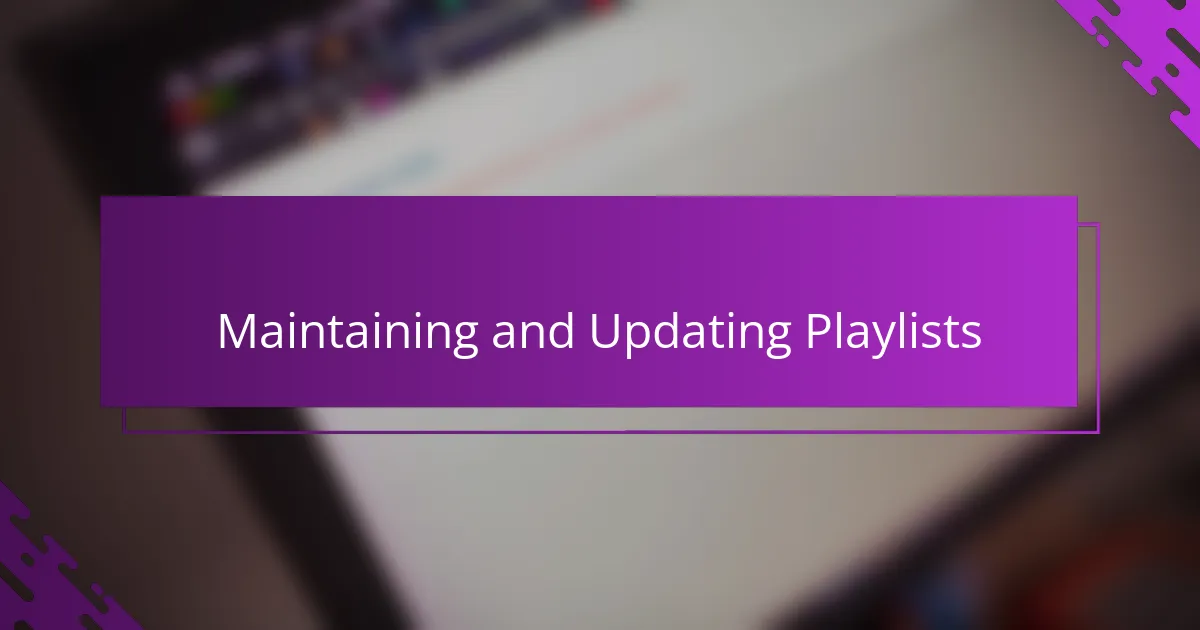
Maintaining and Updating Playlists
Keeping my playlists fresh is an ongoing adventure rather than a one-time task. I often revisit them every few weeks to add newly discovered gems or remove songs that no longer resonate. Have you noticed how a track that once felt perfect might lose its spark over time? That’s why tweaking playlists regularly keeps the mood intact and the listening experience exciting.
Sometimes, I set reminders to update my playlists according to the seasons or my current mood. For example, my “Summer Vibes” list gets a full makeover each year with energetic tunes that match sunny road trips, while my “Cozy Evenings” playlist evolves with more mellow sounds during colder months. This ritual of maintenance ensures each playlist remains a true reflection of where I am in life.
Updating playlists also gives me a chance to rethink the flow and transition between songs. I’ve found that swapping out a single track or rearranging the order can completely change the journey the playlist takes me on. Have you ever tried listening to your whole playlist after a small edit and felt like you discovered it all over again? That’s the subtle magic of mindful playlist upkeep.
